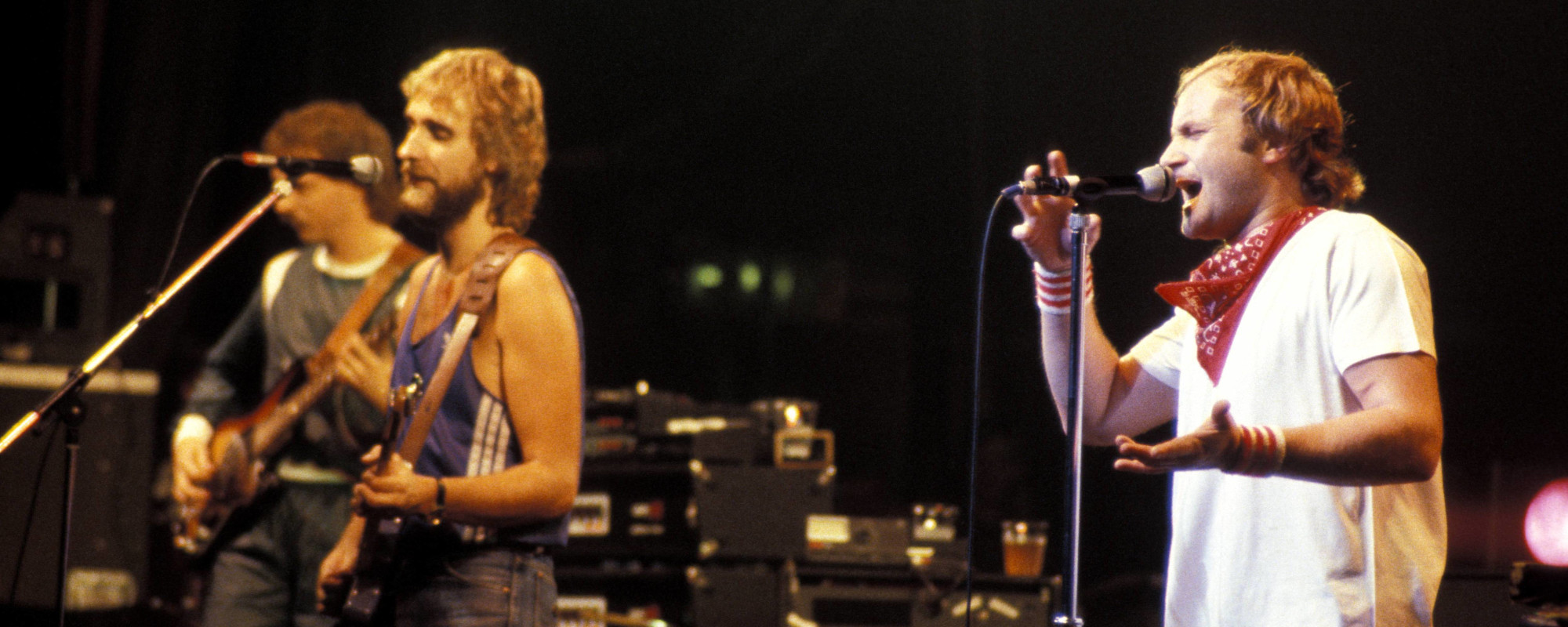Bands go through style transitions all the time, and sometimes they’re so drastic that their fans get confused. Occasionally, those albums don’t do as well, and sometimes they become cult favorites. Some bands transition to a new style gradually over a few albums, but it can still be a drastic change when the old work is held up to the new. Here are four bands who made drastic changes to their style in various ways, from Panic! at the Disco’s sudden change to Genesis’ expansive alterations.
Videos by American Songwriter
Panic! at the Disco Went From Emo Cabaret to Beatles-esque Folk
Panic! at the Disco released their debut album A Fever You Can’t Sweat Out in 2005 but by 2008 they made a complete style shift with the release of their second album, Pretty. Odd. This shift eventually led to the band’s 2009 breakup, but it remains an important turning point for Panic! at the Disco. Primary lyricist and guitarist Ryan Ross started experimenting with a more folk-forward sound, taking the band away from the darker cabaret aesthetics of their debut. Many fans were confused by the drastic style shift and Pretty. Odd. generally wasn’t as universally loved as A Fever You Can’t Sweat Out. Later, though, the album gained a cult following from both established fans and new ones.
Beastie Boys Started Out Hardcore Before Taking Evolving Into Hip-Hop
In 1982, the Beastie Boys released an EP titled Polly Wog Stew. It was later released as a compilation album in 1994 called Some Old Bulls–t, and it has a distinct hardcore sound that is drastically different from their 1986 full-length debut Licensed to Ill. Their early work is purely punk noise reminiscent of a rougher, sloppier Dead Kennedys. Even though Polly Wog Stew is so different from later Beastie Boys, there are still elements of the Boys’ goofy, degenerate nature woven throughout the songs; little vocal trips and shouts, exclamations, hoots and hollers. If they had stuck with hardcore punk, it’s safe to say the Beastie Boys’ legacy would be completely different.
How Blur Went from Indie Britpop to Experimental Noise and More
In the early 90s, Blur was at the height of the Britpop explosion. They feuded with Oasis, won the Battle of Britpop, and then shifted their sound in the late 90s. They went from funky guitar-forward bops to more experimental noise, alternative rock, and seven-minute art rock tracks like “Tender” from the 1999 album 13. Their 1997 self-titled album took them into that more experimental sound, with songs like album opener “Beetlebum” and the ever-popular “Song 2.” This shift was a little more gradual compared to the abruptness of Panic! at the Disco, for example. Blur was always a little funky, they just turned it up a notch in later years.
Genesis Made the Transition From Prog-Rock to Pop
Genesis were pioneers of prog-rock, but eventually, they made the transition to pop. Still, Genesis’ pop was more progressive than most pop of the time. However, there was a definite shift to shorter, more concise pop songs. Most fans agree that their 1978 album And Then There Were Three was the turning point from prog-rock, as was Duke from 1980 and Abacab from 1981. These are generally considered their transition albums, but there are still elements of prog on all of their albums.
One person in a Reddit thread suggested that there are three eras of Genesis: “Gabriel-prog, Collins-prog, and Collins-pop,” but also suggested that as an oversimplification. Genesis’ style shifts are hard to nail down and they’re a little more far-flung than the cut-and-dry shifts of Panic or the Beastie Boys. However, Genesis still made changes to their style through the various years and eras.
Featured Image by Michael Putland/Getty Images













Leave a Reply
Only members can comment. Become a member. Already a member? Log in.